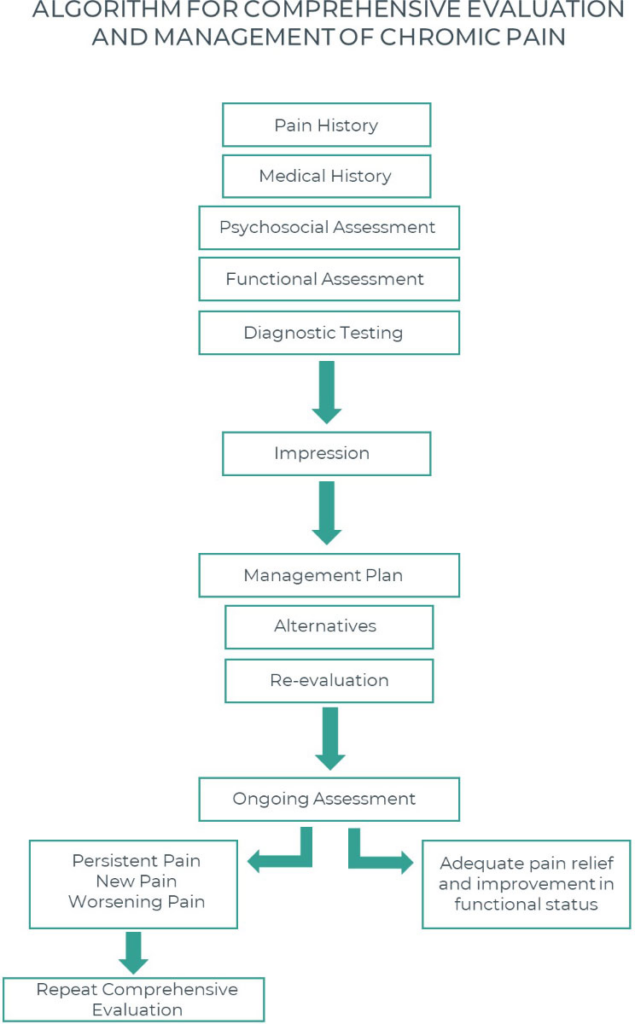How Pain Management Works: Suffering Pain is Complicated
In a popular pain specialist book entitled “Pain-Clinical Manual,” Margo McCaffery wrote:
“If you or a loved one has surgery or cancer that causes pain of moderate to severe intensity, there is a 50% chance that you or your loved one will unnecessarily suffer this pain about 50% of the time”.
The problem is that pain is undertreated, not only chronic pain but also acute pain, and in addition, there is evidence that physicians prescribe based on incorrect information about analgesics.
How is pain defined?
The most widely accepted definition: “Pain is an unpleasant sensory and emotional experience associated with actual or potential tissue damage or described in terms of such damage.” It is a phenomenon of multiple components that impact a person’s psychosocial and physical functioning; this definition acknowledges the complexity of the pain experience.
General discussions of pain often refer simply to three types: 1) ACUTE (relatively brief pain that subsides as healing takes place); 2) CANCER pain, and 3) CHRONIC NON-MALIGNANT pain. However, it is also essential to know that another classification based in the pathophysiology (mechanisms/origin of pain) is commonly employed in the medical sciences: 1) Nociceptive (stimuli from somatic, for example musculoskeletal, and visceral, from organs like the stomach or intestines), and 2) Neuropathic pain (stimuli abnormally processed by the nervous system) that is centrally or peripherally generated. The treatment of pain is affected by both of these methods of classifying pain.
Also, there is the intensity of pain: Mild, Moderate, and Severe, which is assessed using the so-called “Analog Rating Scale” that goes from 0 (no pain) to 10 (most intense possible pain).

Surgery, trauma, tumour growth, and the pain associated with them, trigger several physiologic stress responses in the human body. The purposes of the stress responses are protective in nature, preventing further damage. However, pain and stress responses, especially when prolonged, can also produce many harmful effects in organs and systems, deteriorating quality of life. Many studies have shown that either lack of pain assessment or differences between the clinicians’ pain ratings and patients are a significant cause of inadequate pain management. When clinicians do not obtain pain ratings from patients, they are likely to underestimate the intensity of pain, particularly moderate to severe. In a study comparing pain ratings of children, nurses underestimated the children’s pain, especially after giving an analgesic.
Such underestimation by caregivers contributes to under-treatment of pain (clinicians do not necessarily accept what the patients say and believe they exaggerate). The comprehensive initial and ongoing assessments of patients with pain also should include appropriate physical and neurologic examinations and inquiries about psychosocial factors related to the pain, such as family and financials.
For well over a century, clinicians have feared that treating pain of unknown origin will mask crucial diagnostic information. However, this concern is being re-evaluated as research has demonstrated that pain can be relieved during the diagnostic process without jeopardizing diagnosis. A similar problem is under-treatment in the emergency department, which is well documented. In a review of 198 patients admitted with various acutely painful medical and surgical conditions, 56% received no analgesia; of those who did receive it, more than 50% waited for more than one hour. In another study evaluating patients with acute abdominal pain, more than half received no analgesia in the first 24 hours. Several medical associations now state that “it should be considered poor patient care not to treat pain while attempting to arrive at a diagnosis.”
Regarding pain treatment, in practice, analgesics are divided into three groups: non-opioids (like Acetaminophen or Non-Steroidal Anti-inflammatory drugs like Ibuprofen), opioids (refers to Codeine, Morphine and other natural, semisynthetic and synthetic drugs), and adjuvants (a drug that has a primary indication other than pain but is also analgesic for some painful conditions like some antidepressants or anticonvulsants).
Is it possible to combine analgesics?
The following are reasons for considering the use of more than one analgesic:
- Combining two or more drugs works in some cases better to deal with the underlying pain mechanisms.
- The combination allows for smaller doses of each analgesic, thereby reducing the side effects of any one analgesic.
- When the patient has different types of pain, such as neuropathic pain and musculoskeletal pain, they are not responsive to a single analgesic.
Risk Factors For Chronic Pain:
Understanding factors other than the primary disease process involved in the development and maintenance of pain will help prevent a chronic pain state. Three factors play a role in the chronicity of pain:
Individual Predisposition: Refers to the acquired or innate characteristics that will influence a person’s predisposition, like gender, age, and endogenous pain modulation responses. Chronic pain syndromes affect women more frequently than men, and sex hormones probably play an essential role.
Age also plays a role. Progressive musculoskeletal degeneration that accompanies aging and decline in the efficacy of endogenous pain control systems may contribute to chronic pain. Also, genetic predisposition is well documented in the literature.
Environmental Factors: This includes external stressors such as a history of previous pain or abuse. For example, it has been demonstrated that children born prematurely receiving painful clinical interventions will be more sensitive to pain later in life.
Psychological Factors: Anxiety, depression, and catastrophizing are also significant predictors of pain chronicity.
To summarise, each individual will respond differently to pain due to differences in genetic and environmental background, which will influence the development of persistent pain. A suggested algorithm for chronic pain evaluation and management can be found below:

In conclusion, pain is a defensive weapon but, at the same time, can become a disease by itself, even when the cause of a painful situation has disappeared. Yes, it is a complicated medical condition that requires careful and prompt attention, and in the case of chronic pain, the care of specialised health care providers.
Masters Speciality Pharma are a Global Pharmaceutical Company with a goal to improve patients’ lives through access to life-saving medicines. We are expert pharmaceutical drug suppliers for the healthcare sector and life science partners. We focus in providing patients in developing markets with life-saving medications.
References:
- Pain- Clinical Manual. By Margo McCaffery and Chris Pasero. Mosby Editors. Second Edition.
- Pharmacology of Pain. Beaulieu, P. et.al. Editor. International Association for the Study of Pain. 2010 IASP Press.
- Current Topics in Pain. Jose Castro-Lopes. Editor. International Association for the Study of Pain. 2009 IASP Press.

